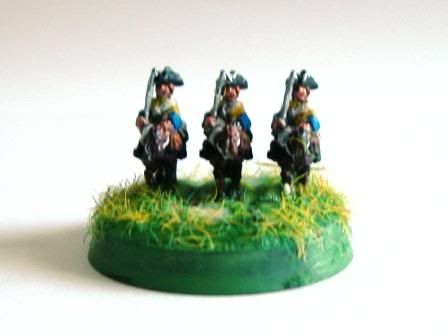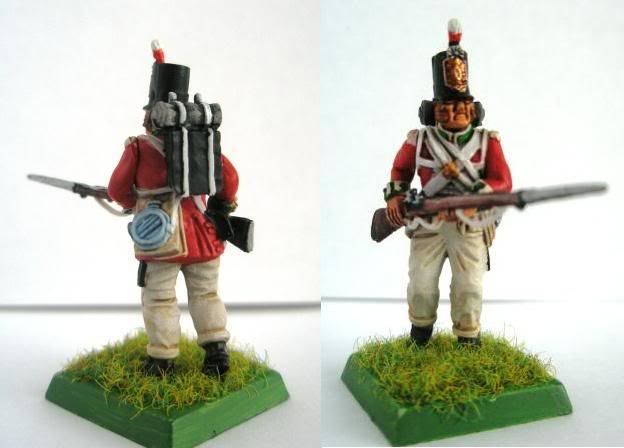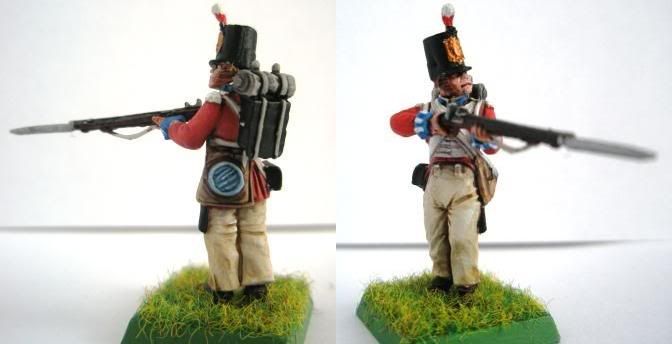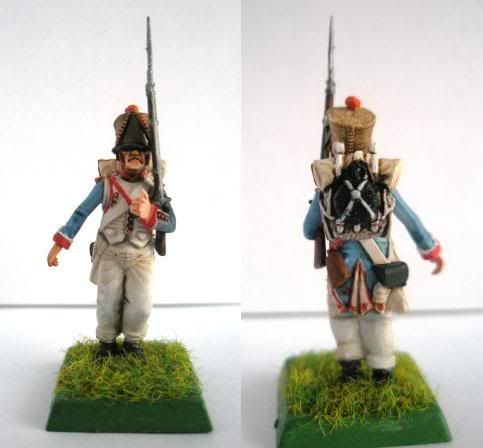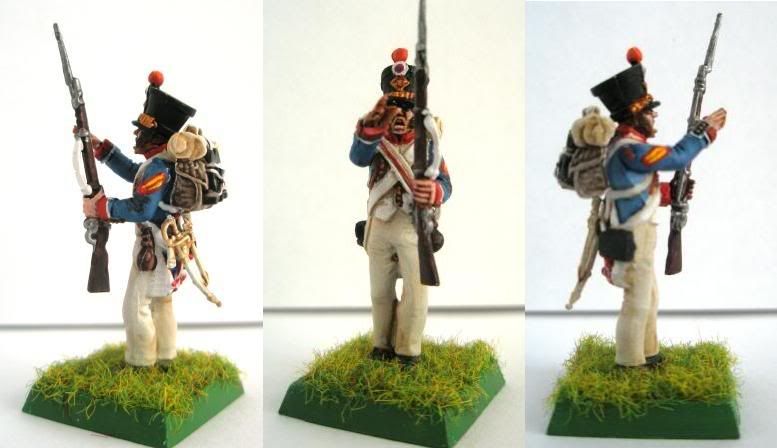Fear not, though! I haven't totally neglected my Victrix, and I now have some semi-complete (all but the backpack and grassing the base) and some in a state of "in progress". I've taken a couple of photos of the in-progress lot for two reasons- firstly, to show how I paint, and secondly, as a motivator to complete them! I don't know if anyone else gets this (I'd be glad to hear if you do), but when a miniature has been sat on my desk for a long time I have real trouble finishing it; I'll do a little here, and a little there, but it never amounts to a finished figure. Dozens of other miniatures will be primed and painted before those stragglers ever make it to the table.

The first and second are line fusiliers, the third a legere chasseur, and the fourth a line grenadier.
Apart from the second in line, these show the new way I've experimented doing French blue, similar to the way I've been doing British red- a colour and wash technique, as opposed to just using a wash over white. It's okay, a bit shinier than I'd like, and harder to correct mistakes. You may notice they don't have arms; this is because I find it much easier to paint the chests without the musket-arm. Multi-part plastics can create poses much harder to paint than metals, where the firing arm would be "fused" to the chest, instead of distinct. For really close inspection, it does matter to paint that detail.
 This is a conversion I've been planning for a while, giving an alternative to the one pose for sergeants given by the Victrix box. The hands are made from greenstuff, with the shaft of the spontoon made from an old plastic spear. The hands could do with some work, although there crudeness could be gotten around by painting them as gloves.
This is a conversion I've been planning for a while, giving an alternative to the one pose for sergeants given by the Victrix box. The hands are made from greenstuff, with the shaft of the spontoon made from an old plastic spear. The hands could do with some work, although there crudeness could be gotten around by painting them as gloves. This is more whimsical, made from a kneeling trooper with his legs repositioned. Again, it's a bit rough-and-ready, but with a little cleaning up should look okay. I intend to put a facsimile newspaper in his hands, as if he's catching a cheeky break.
This is more whimsical, made from a kneeling trooper with his legs repositioned. Again, it's a bit rough-and-ready, but with a little cleaning up should look okay. I intend to put a facsimile newspaper in his hands, as if he's catching a cheeky break.

